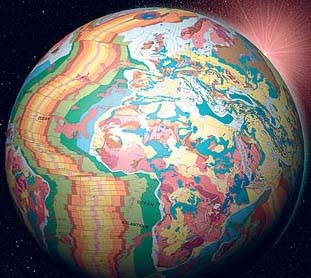 Sydney, April 22 : In an analysis of fossil deposits in central India, an international team of geologists has found that complex life, in the form of multicellular organisms, existed on earth more than 400 million years earlier than previously thought.
Sydney, April 22 : In an analysis of fossil deposits in central India, an international team of geologists has found that complex life, in the form of multicellular organisms, existed on earth more than 400 million years earlier than previously thought.
According to a report by ABC News, the finding comes out of research aimed at ending controversy over the age of the Vindhyan basin in central India.
The controversy concerns two fossil discoveries in 1998, which gave conflicting views over when the Vindhyan sedimentary basins, which spread over more than 100,000 square kilometers of central India, were formed.